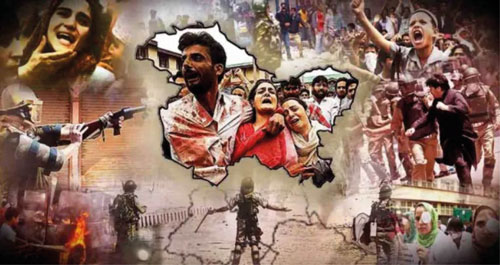Authors: Ayesha Siddiqua, Atif Ashraf, Ghulam Shabbir and Qamaruddin Zia Ghaznavi
Affiliation: National University of Modern Languages (Islamabad, Pakistan), University of Central Punjab (Pakistan), Beacon House National University (Lahore, Pakistan).
Organization/Publisher: Journal of Business and Social Review in Emerging Economies/ CSRC Publishing (Center for Sustainability Research and Consultancy, Pakistan)
Date/Place: May 2021
Type of Literature: Analysis
Number of Pages: 10
Link: http://www.publishing.globalcsrc.org/ojs/index.php/jbsee/article/view/1621
Keywords: Kashmir, Article 370, Indian Media, Pakistani Media, China
Brief:
On August 5, 2019 India abrogated Article 370 in Kashmir, which had given Kashmir a semi-autonomous status. Using its legislative powers, Modi’s party has turned the state of Jammu and Kashmir into two union territories. The Semi-autonomous status was turned into the federal control by the Indian State. Utilizing the theories of framing and peace and war journalism, this study deciphers the Kashmir conflict as presented by the Indian and Pakistani media after the abrogation of Article 370. It also aims to explore the strategic relevance of Kashmir for neighboring China. The methodology used is quantitative content analysis approach. The media outlets used for the content sampling are Times of India and Dawn.
In terms of peace journalism framing, Dawn took a lead with 25.6% in its editorials, while Times of India dominated by 11.8% in its editorials and columns. The research concludes that both Indian media and Pakistani media framed the Kashmir dispute using the frame of war journalism. Also, Beijing maintains the status-quo of giving the peaceful verbal gestures for the stability of the region.
By: Ruby Clayton, CIGA Research Associate




